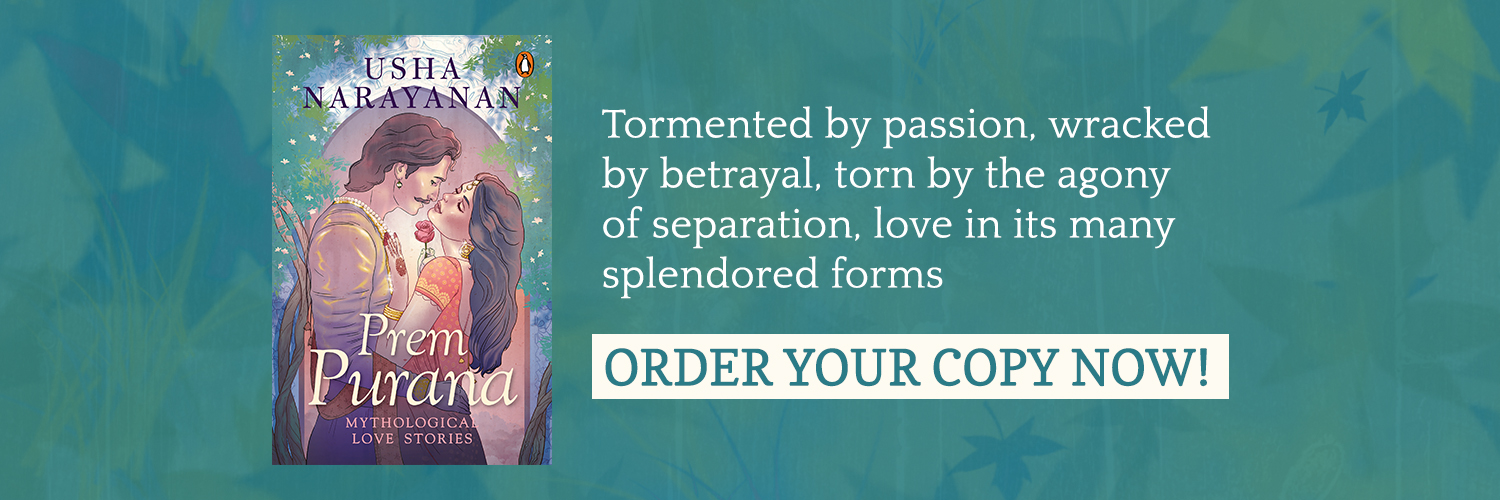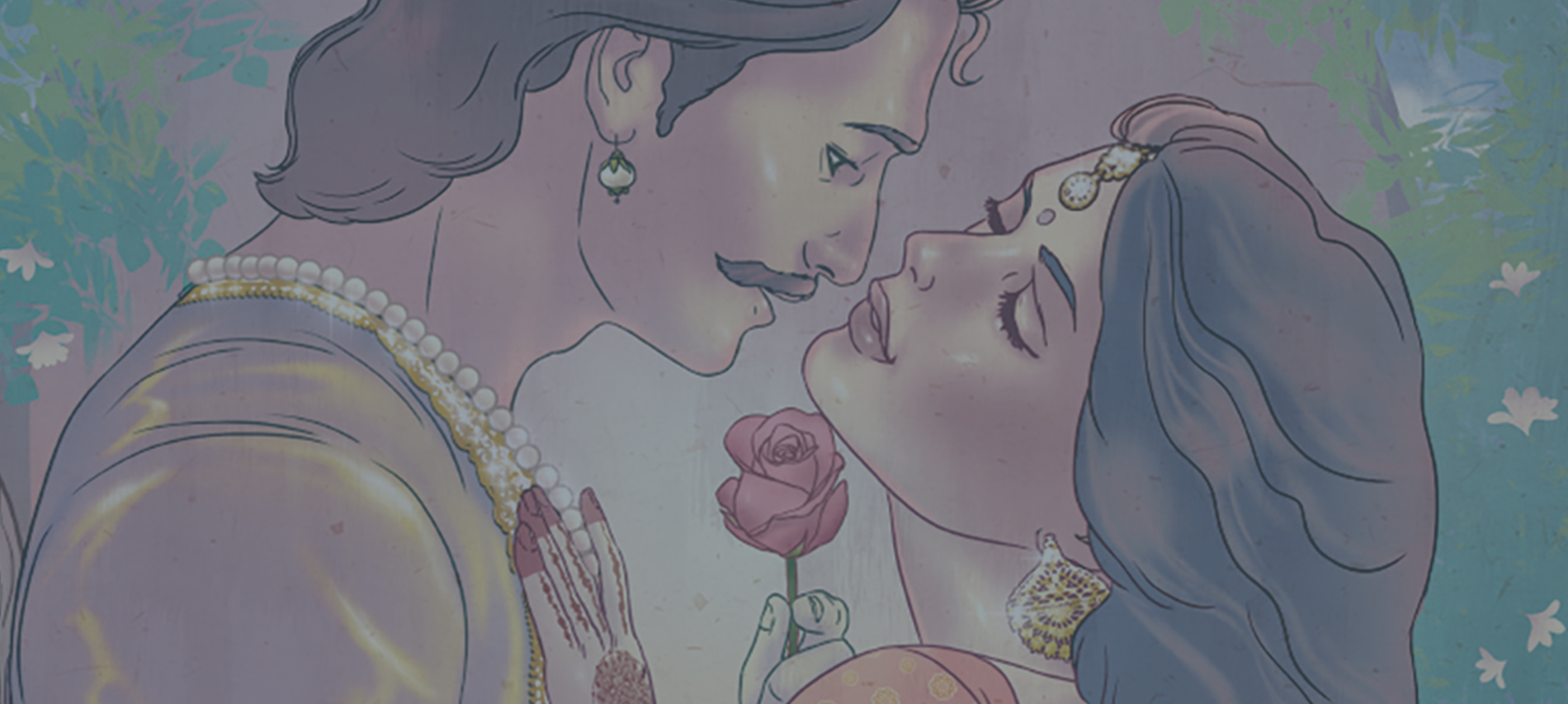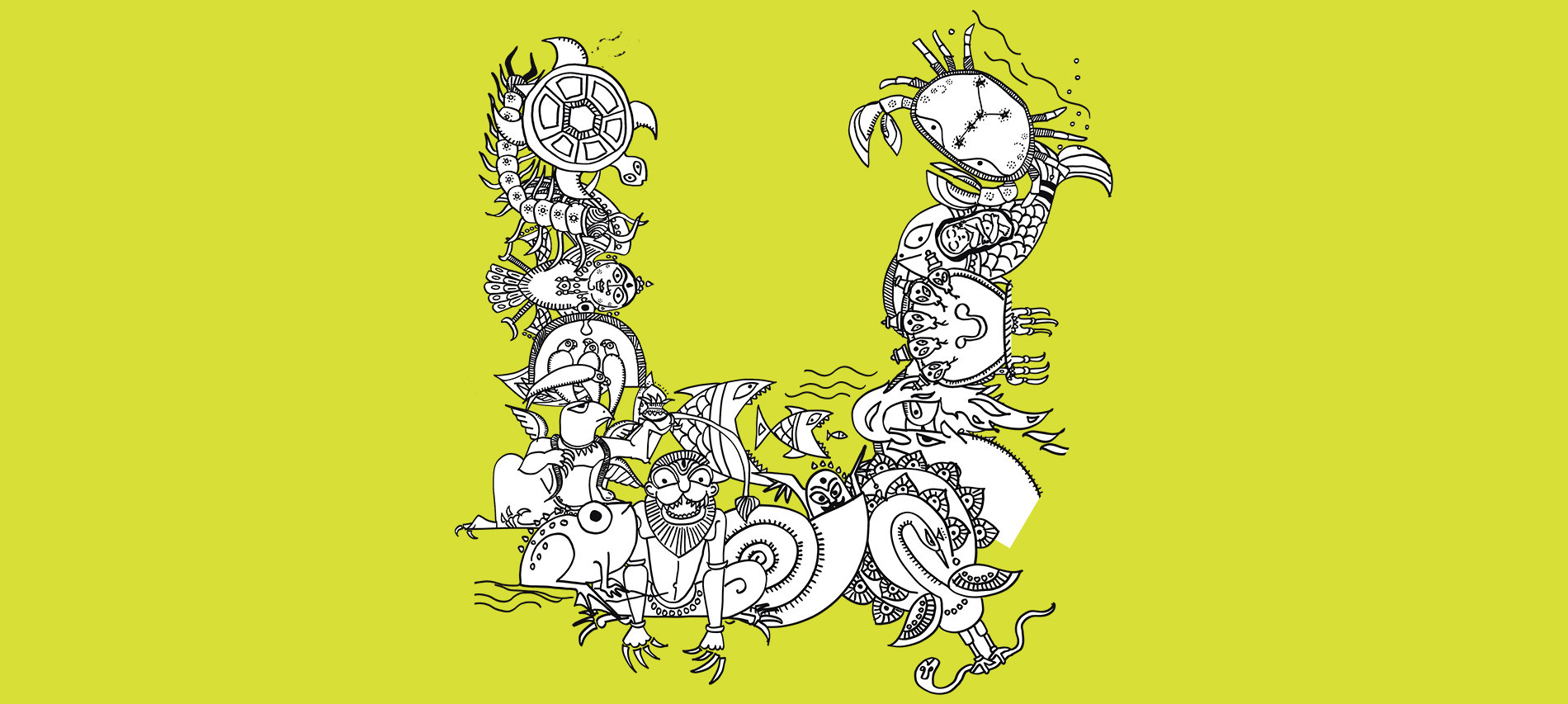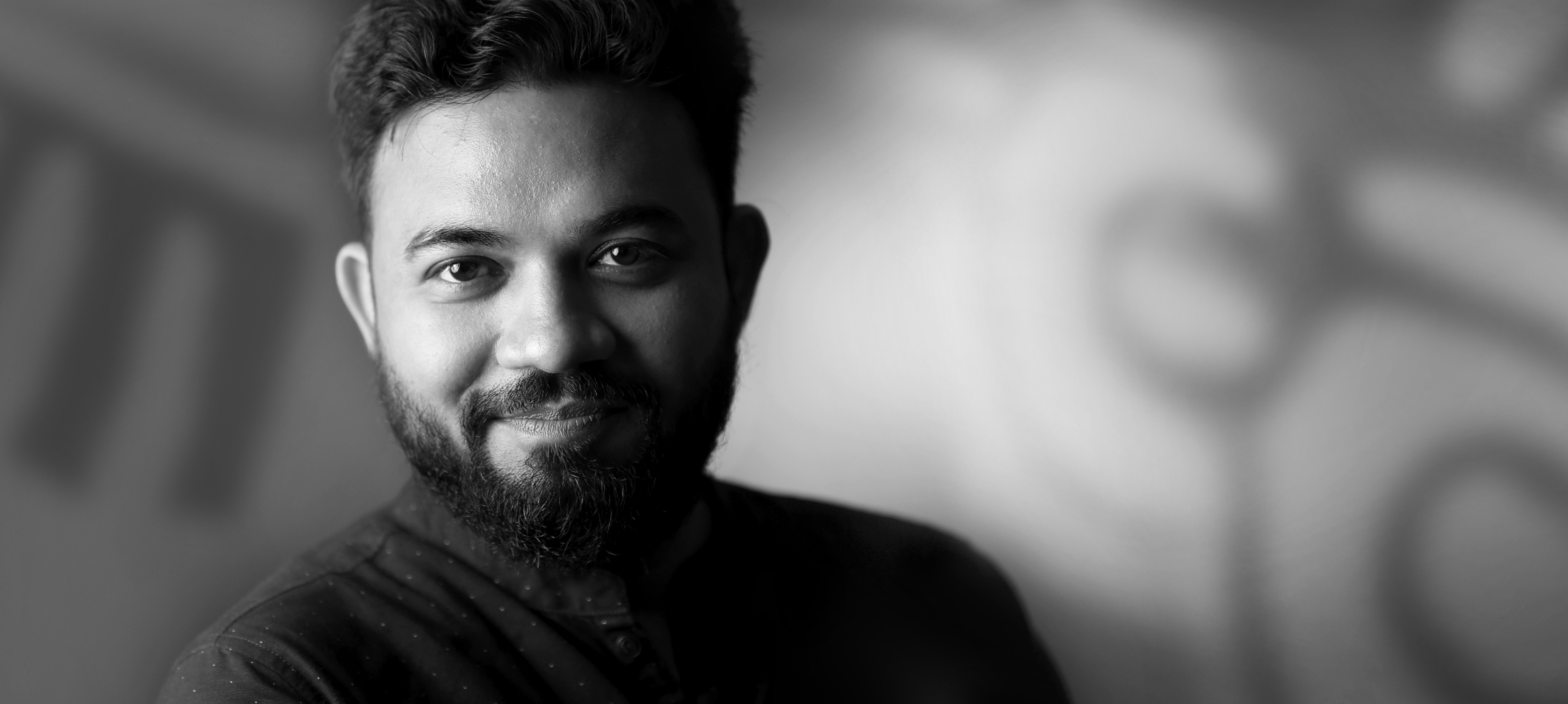Usha Narayanan, author of Prem Purana, has donned many hats, before becoming a successful full-time author. In her glorious career, she has dabbled with genres like thriller and romance, before turning to mythology. Her works Pradyumna: Son of Krishna and The Secret of God’s Son have been praised as ‘Indian mythology at its fiercest and finest’.
Her latest book, Prem Purana is about stories of love and extraordinary devotion found in Hindu mythology. On the launch of the book we asked her what about the mythological stories attracted her to write about them.
Here’s what she had to say.
The idea of writing mythological love stories was born during a conversation with my editor Vaishali Mathur at the Jaipur Literature Festival when she suggested that I should combine my strengths in writing mythology and romance. At that point, I was busy with The Secret of God’s Son and it was only after it was completed that I could think seriously think about this. I knew that our epics and Puranas focused more on the battle between good and evil, with heroic gods and fearsome demons confronting one another. Only a few love stories were widely known, such as the one of Kama shooting his arrow of love at ascetic Shiva, or of Arjuna winning Draupadi’s hand at her swayamvara.
I began my quest by re-reading all the ancient lore with an eye to discovering tales of the heart. As always, when writing mythological fiction, I wished to focus on untold stories, using my imagination to bring alive minor characters or lesser-known aspects of major ones. The first character who caught my eye was Ganesha. We think of him as the lovable elephant-headed god with a fondness for modakas. But who did he marry? People in the south of India swear that he is single, but others state vociferously that he is married. The images in temples show him either alone or with a wife or two. What are their names? Some say Siddhi and Riddhi, while others think their names are Siddhi and Buddhi. That was enough intrigue to stimulate my mind!
Another interesting layer to the story is the idea that Buddhi, Siddhi and Riddhi represent intellect, spiritual power and prosperity. As their names are merely mentioned in passing in most Puranas, I could give full rein to my imagination in portraying them. I endowed the three with distinct characteristics and showed Ganesha wooing them in different ways, according to their particular likes and dislikes. My Riddhi is sprightly, Buddhi is silent and deep, and Siddhi is fierce and opposed to the very idea of marriage! Their stories span three realms and four yugas, shedding light on many engaging aspects of Ganesha, the first among the gods. To add to the appeal, I discovered that in Bengal, during Durga Puja, Ganesha even has a banana bride!
I think readers will enjoy seeing Gajamukha in a refreshing new light in Ganesha’s Brides, the first of the three stories in Prem Purana.
“Siddhi watched as more and more arrows struck Ganesha, causing blood to flow like a flood. Was he ready to meet death rather than forsake his promise to her? Would he sacrifice everything for the sake of his love?”
**
For the second story, Mandodari, my inspiration came from the Ramayana. Ravana was Brahma’s great grandson on his father’s side and an asura prince on his mother’s. Choosing to follow the asura path, he pillaged heaven and earth, ravished women and abducted Rama’s wife Sita. What I found of interest was not his war with Rama, but his relationship with his wife Mandodari. How did she react to all this? Did she protest or did she submit silently to his actions? What was her background? Did the rakshasa love her? And the most exciting question of all―did Mandodari come face to face with Sita, the woman she regarded as the instrument of doom that would bring down Lanka?
I found no answers in the commonly available texts where Mandodari features in a mere two or three scenes. Fortunately, however, there are many Ramayana versions available. I followed the uncommon trails, used my imagination and fleshed out the queen’s character, placing her emotions at the centre of the narrative. The story also reveals startling new facets of Ravana’s character and motivations. I think Mandodari, with all its twists and turns, will be riveting and revelatory to readers.
“‘Snatching a woman by force or stealth is not an act of valour, Ravana. She is not an object of lust or a means to settle scores with your enemy,’ said Mandodari, her voice loud and clear. She would speak the truth regardless of consequences. It was a risk she had to take for Ravana and her people.”
**
After delving into the lives of a merry god and a dire rakshasa, it was time to move to the human plane, with the story of King Nala and Princess Damayanti. She turned down the gods who courted her at her swayamvara and chose Nala as her husband. Though she chose love over immortality, Nala was driven by his own demons and abandoned her in a dangerous forest. Damayanti struggled to survive the perils that confronted her at every turn, but forged forward regardless. She did not give up hope and devised various stratagems to reclaim her happiness.
I was fascinated by her strength and also by the magical swan that plays a key role as the messenger of love. I named the swan Gagana, meaning sky or heaven, and created a charming and audacious companion to Damayanti. The Kali demon, who plays a major role in my previous books, Pradyumna: Son of Krishna and The Secret of God’s Son, is the enemy that Nala and his queen must confront. How can a mortal pair combat the power of the demon who reigns over a dark yuga that signals the end of the world? Love, loss, hope and despair form the chequered background of this poetic tale.
“‘Majestic Ashoka, whose name signifies one who destroys grief . . . Free me from pain and unite me once more with my Nala!’ cried Damayanti, sinking to her knees under a soaring Ashoka tree. Alas, the tree made no answer and all she could hear was the wind rustling among the leaves.”
**
A major part of my excitement in writing these stories came from the opportunity to focus attention on the women in our epics who are often sidelined. We often find that a woman is regarded as a prize to be won, someone who is forced to watch quietly while her husband makes disastrous decisions. However, the heroines in Prem Purana are central to the action. They are strong, independent thinkers who inspire the males in their lives―god, asura or king―to do the right thing and live up to their responsibilities.
I hope readers enjoy reading these tales which provide a good mix of fervour and fury, heroism and heartbreak, set against a spectacular backdrop spanning heaven and earth.

Tag: epics
The Great Animal Kingdom of Hindu Mythology: ‘Pashu’ — An Excerpt
Hindu mythology not only has some of the most interesting human characters ever, but a huge kingdom of animals too. From fish that save the world to horses that fly higher than birds, every animal in Hindu mythology has a story to tell and a lesson to teach.
Devdutt Pattanaik’s ‘Pashu’ dives into this bizarre, wonderful world of mythological animals and unravels a secret or two about it.
Here’s a snippet from ‘Pashu’ that is sure to make you want to find out more!
Brahma, the creator, had a son called Kashyapa. Kashyapa had many wives who bore him different types of children. Aditi gave birth to the devas—gods who live in the sky. Diti gave birth to the asuras— demons who live under the earth. Kadru gave birth to the nagas, slithering serpents and worms that crawl on trees and on earth. Vinata gave birth to garudas, birds and insects that fly in the air. Sarama gave birth to all the wild creatures with claws and Surabhi gave birth to all the gentle animals with hooves. Timi gave birth to all the fishes and Surasa gave birth to monsters. Thus, all gods, demons, animals and even humans have a common ancestor in Kashyapa. They call him Prajapati, father of all creatures. His story is found in the Puranas, books that are at least two thousand years old.
There are also other theories of how animals came into being. Some can be found in earlier books, while some have never been written but passed down orally by stargazers and storytellers.
Brahma and Shatarupa: The first man, Brahma, saw the first woman, Shatarupa, and fell in love with her. He tried to touch her. She laughed and ran away. He followed her. To avoid getting caught, she turned into a doe. To catch up with her, he turned into a stag. She then became a mare. He became a stallion. She transformed into a cow. He turned into a bull. She became a goose and flew up into the air. He followed her, taking the form of a gander. Every time she took a female form, he took the corresponding male form. This went on for millions of years. Thus, over time, all kinds of beasts came into being, from ants and elephants to dogs and cats. So say the Upanishads, conversations that took place nearly three thousand years ago.
Yogasanas: Shiva, the great yogi, was at peace with himself. In his joy, he assumed many poses, known as asanas. Many of these poses resembled animals. For example, the ustra-asana resembled a camel. When Shiva took this pose, camels came into being. From the matsya-asana, fishes came into being. From the bhujang-asana, snakes came into being. From the salabh-asana, locusts came into being. From the go-mukha-asana, cows came into being. Shiva thus stood in millions of poses, giving rise to millions of different kinds of animals. So says the lore of yogis.
Avatars: From time to time, Vishnu, who resides on the ocean of milk, descends to walk on the earth. He takes the form, or avatar, of different animals when he does so. Sometimes he is a fish, sometimes a turtle, sometimes a wild boar, sometimes a swan . . . In memory of the many forms he took, various animals came into being. So the next time you see a fish, remember that it was once a form of Vishnu. And when you see a swan, remember that, too, was once a form of Vishnu.
Rashi: A cluster of stars is known as a constellation. Ancient rishis divided the sky into twelve equal parts, each occupied by a constellation. The constellations are called zodiacs in English and rashis in Sanskrit. Some of the rashis take the form of animals. There is the Mesha or ram constellation that the sun passes through in early summer. Then there is Mina, the fish; Vrishchika, the scorpion; Simha, the lion; and Vrishabha, the bull. After the sun passes the Makara constellation, whose tail is like a fish and head is like an elephant, the days grow longer and warmer, heralding the approach of summer. After the sun passes the Karka or crab constellation, the days become shorter and colder, indicating the approach of winter. This information comes from Jyotisha Shastra, or the books of astrology. Poets often wonder what came first: the constellations or the animals. Did the design of the stars inspire the gods to create the animals?
Yoni: Many Hindus believe that a being gets a human life only after passing through 84,00,000 animal wombs. Astrologers say that one can find out which was the last animal’s womb or yoni one was born in from one’s time of birth. That yoni determines an aspect of one’s personality. Some of the yonis are: elephant, cow, mare, snake, cat, dog, rat, monkey, tiger, goat, buffalo and deer. Which yoni came first—that of man or that of an animal? Are humans the ancestors of animals or is it the other way around? There is no escaping the fact that we are related to the birds and beasts of the forest. They may be our ancestors or they may be our descendants.
Have more questions on the origins of the mythological animal kingdom? Get your copy of ‘Pashu’ now!

‘The Story of Ravana, Ram or Sita?’: ‘The Girl Who Chose’ — An Excerpt
India’s favourite mythologist Devdutt Pattanaik’s ‘The Girl Who Chose’ brings a fresh perspective to what we have commonly known of the Ramayana — the story of Ram.
However, it has largely gone unnoticed that it was the choices that Sita had made which becomes the pivot for the Ramayana.
Here’s an excerpt from Devdutt Pattanaik’s book telling us why the story of Sita is at the heart of all that happens in the epic.
“Once upon a time, there was a man called Ravana, also known as Paulatsya—being the descendent of Rishi Pulatsya from his mother’s side. He was king of Lanka and ruler of the rakshasas, who tricked a princess called Sita, dragged her out of her house in the forest and made her prisoner in his palace. He was killed by Sita’s husband, Ram, the sun-prince. This story is called the Pulatsya Vadham, or the killing of the descendent of Pulatsya.
The story of Ravana’s killing is part of a longer tale called the Ramayana, which tells the story of Ram from his birth to his death. However, in the din of Ravana’s cruelty and Ram’s valour, something is often overlooked—the story of Sita, the girl who chose.
Valmiki, author of the Ramayana, written over 2000 years ago, tells us how Sita is different from Ram and Ravana. Ravana does not care for other people’s choices, while Ram never makes a choice as, being the eldest son of a royal family, he is always expected to follow the rules. But Sita—she makes five choices. And had Sita not made these choices, the story of Ram would have been very different indeed. That is why Valmiki sometimes refers to the Ramayana as the Sita Charitam, the story of Sita.
Do you know what were the choices that Sita had made? Grab a copy and find out now!
Things You Didn’t Know About ‘Vyasa’ Illustrator Sankha Banerjee
The first in the series that retells the story of the epic Mahabharata, Vyasa sets the stage for the battle of Kurukshetra. This brilliantly illustrated graphic novel is authored by Sibaji Bandopadhyay.
Bringing this epic to life is artist Sankha Banerjee, who enthralls the readers with the many illustrations in the graphic novel.
Here’s taking a sneak peek into the interesting life of Sankha Banerjee.






We bet you’re as dazzled by his art work as we are!











